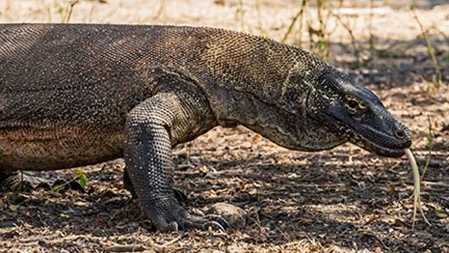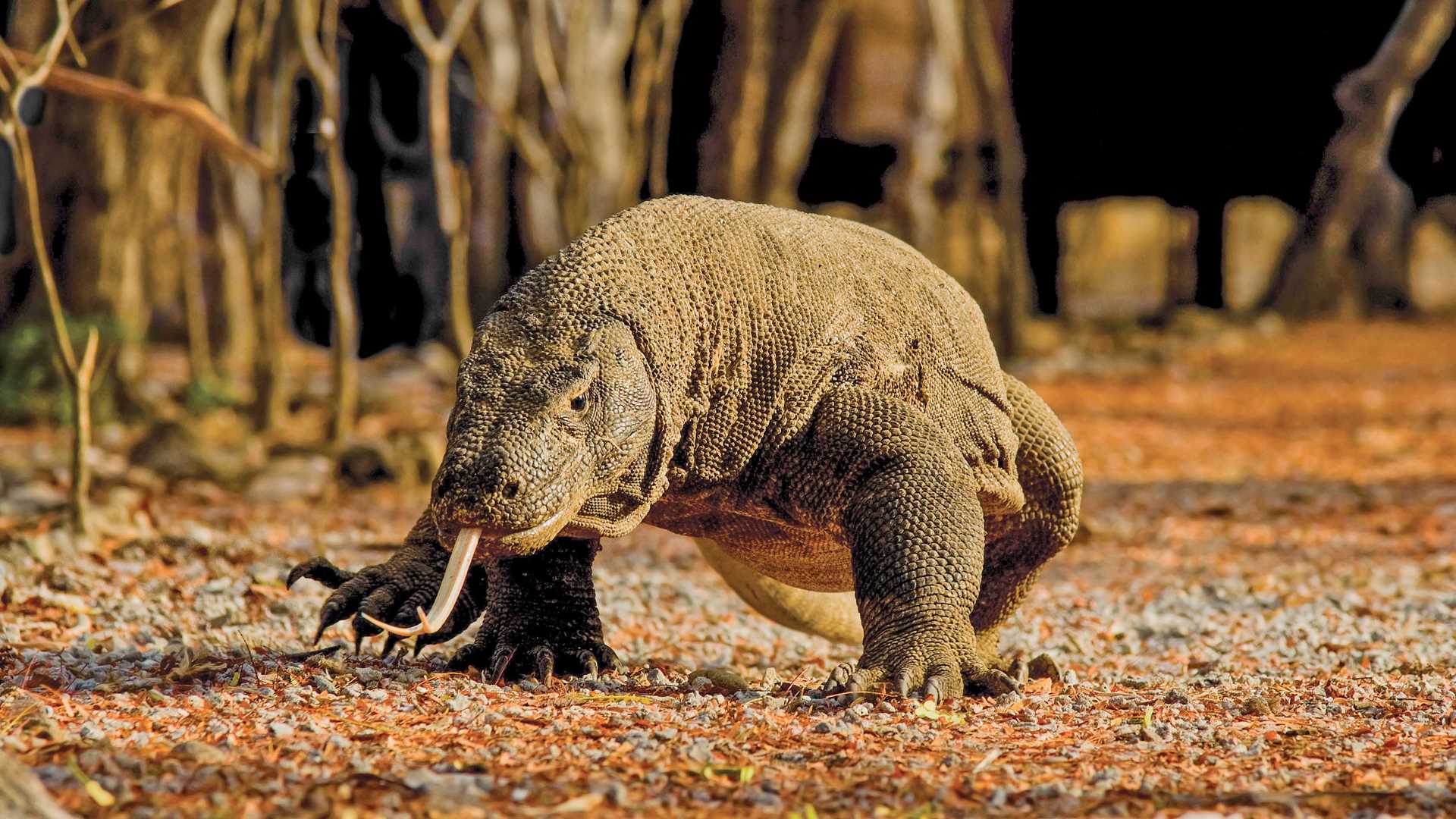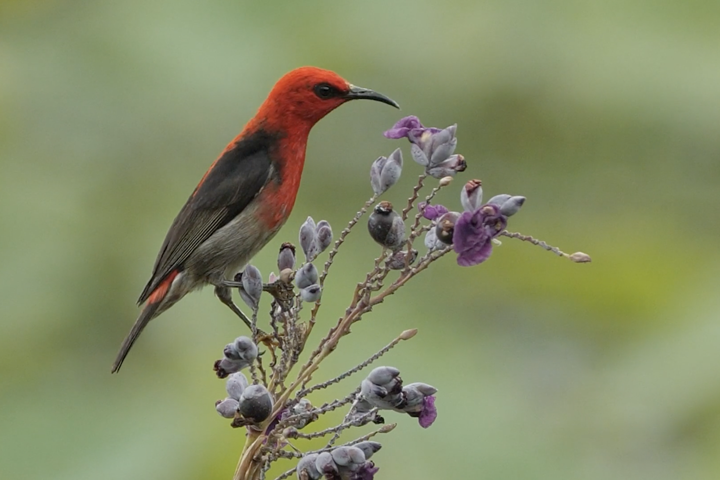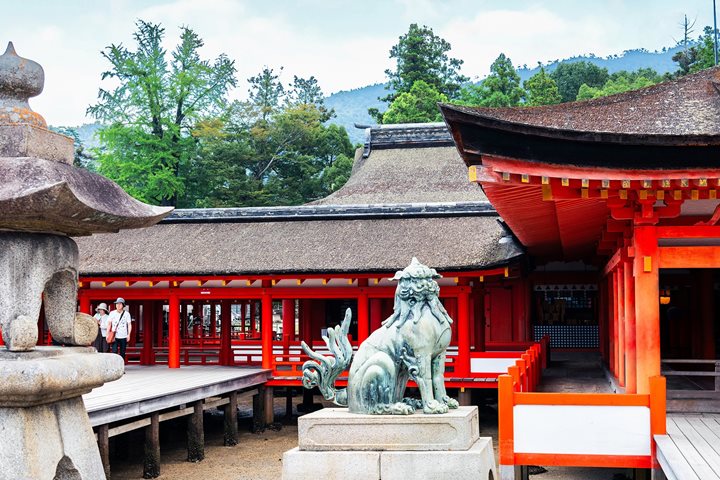Get to know the largest living lizard
Order: Squamata
Family: Varanidae
Genus: Varanus
Species: V. komodoensis
Range: Endemic to the Indonesian islands of Komodo, Rinca, Gili Montang, Gili Dasami & Flores
Population: Less than 6,000 dragons remain
IUCN Red List Status: Vulnerable
Key Traits: Distinct scaly skin; long, flat heads with rounded snouts; bowed legs; long, forked tongues; and tails the length of their body; can reach 10 feet long & more than 170 pounds.

Discover fun facts about the komodo dragon.
Read more
VISIT KOMODO NATIONAL PARK ON OUR BRAND-NEW ITINERARY > Get Inspired by Photos, Videos, Webinars, Stories, and Exclusive Offers. Sign Up
On Indonesia’s Lesser Sunda Islands, the Komodo dragon is king. These remarkable predators live up to their legend, eating any and all other animals (wild boar, deer, snakes, birds, goats, even smaller dragons!) that share their tropical domain. Although Komodos can run up to 13 miles an hour for short periods of time, they generally rely on a stealth hunting strategy and lie in wait for passing prey. When an unsuspecting victim wanders by, the dragon attacks with sharp claws and nearly 60 serrated teeth that deliver a nasty bite.
But contrary to a long-held belief, it’s not bacteria-laden saliva that makes a Komodo bite so deadly. In fact, it’s venom. In 2009, researchers discovered Komodos ooze venom from complex glands in their lower jaws. Once injected, those toxins lower blood pressure, cause massive bleeding, prevent clotting and induce shock, pretty much guaranteeing that dinner will soon be served!
Watch the video above to learn more about these menacing monitor lizards.




